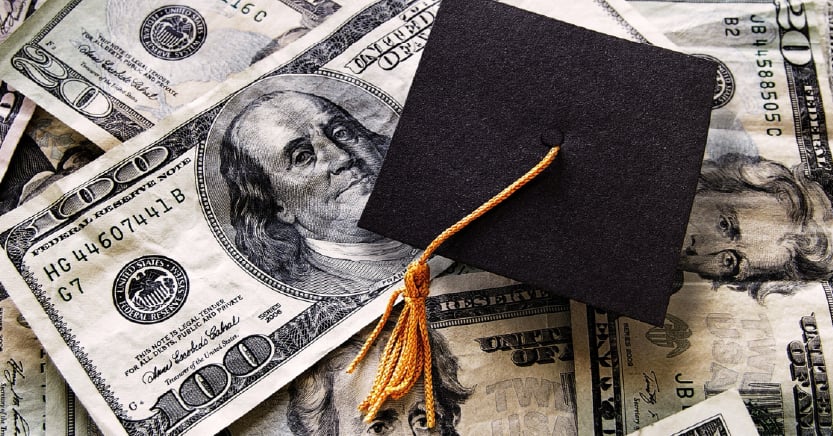As Congress and the President negotiate on the debt ceiling, one sticking point is the work requirements that GOP leaders want to apply to income assistance programs like Medicaid and SNAP. Instead of focusing on low-income people who are already mostly employed or facing significant barriers to employment, lawmakers who want to encourage labor force participation should revisit existing tax breaks subsidizing wealthy individuals who live off their assets rather than work.
Along these lines, Congress could attach a new work requirement to the tax code’s lower rate for capital gains and stock dividends, which is a tax break that mostly benefits the richest 1 percent of taxpayers, including those who do not work at all and live off their investments. Even if this new work requirement is limited to millionaires, it would likely bring in more than the $120 billion that the House GOP proposes to raise over the next decade by imposing new work requirements on programs for low-income people.
The work requirement for this tax break could limit the capital gains and stock dividends eligible for special, lower tax rates to an amount equal to the taxpayer’s earnings each year. In other words, wealthy individuals’ access to the biggest tax break for investments would be directly tied to their workforce participation.
Work Requirements in the Limit, Save, Grow Act
In April, House Republicans approved the Limit, Save, Grow Act, which would delay a government default for less than a year (through March of next year) in exchange for more than $4 trillion in spending cuts. Republican lawmakers have remained firmly opposed to raising more tax revenue, despite evidence that tax cuts enacted under previous administrations are primarily responsible for the budget gap this century. The bill includes provisions that would cut assistance by $120 billion over a decade by imposing new work requirements on Medicaid, food assistance (SNAP) and Temporary Assistance for Needy Families (TANF).
As the Center on Budget and Policy Priorities explains, SNAP and TANF already have work requirements that do not seem to increase employment while states that briefly attempted to impose work requirements on Medicaid were headed towards cutting off thousands of people from health care without increasing workforce participation. These requirements cut off many people who were in the labor force but who had difficulty providing the proper paperwork and navigating the bureaucracy enforcing these requirements.
These work requirements seem designed to address an imaginary problem. As the Center on Budget and Policy Priorities explains:
“Most adults with low incomes who are able to work for pay do so; those who aren’t are often between jobs, in school or training, are ill or have disabilities that impede their ability to work, or are caring for loved ones, some of whom are ill or disabled. For example, among SNAP participants who are working-age, non-disabled adults, more than half work while receiving SNAP — and 74 percent work in the year prior to or the year after receiving SNAP.”
Astonishingly, the Limit, Save, Grow Act would actually lose the same amount of revenue, $120 billion, by cutting funding for the IRS to enforce tax laws on households making more than $400,000. (A recent report from former Treasury officials Natasha Sarin and Mark Mazur estimates that the revenue loss would be much higher from repealing this enforcement funding, at least $480 billion.)
How Congress Could Attach Work Requirements to a Huge Tax Break for the Rich
If lawmakers really are concerned about work incentives, they should worry about tax provisions that are more generous to those who live off their wealth than those who earn income from work.
People who receive long-term capital gains (profits from selling assets that they have owned for a year or longer) or certain stock dividends can pay a lower personal income tax rate on that income than they pay on income from work. The top personal income tax rate for earnings and most other income is 37 percent, but for long-term capital gains and qualified dividends it is just 20 percent.
This means that if two people have the same income, but one works while the other lives off investments they inherited or acquired years ago, the working person will pay more in federal personal income taxes than the person who does not work.
This type of unfairness – two people at the same income level paying different effective tax rates – is bad enough. What is worse is that the lower tax rate for capital gains and dividends disproportionately benefits the rich, who receive most of these types of income. The most recent analysis from the Congressional Budget Office on this topic concluded that 75 percent of the benefits of the lower rate for capital gains and dividends went to the richest 1 percent of Americans in 2019. The preferential rate also contributes to racial inequity in the tax code. A recent Treasury study found that 92 percent of the benefits of the preferential rate flow to white families even though they make up just 67 percent of families in the United States.
A benefit provided through the tax code is equivalent to a benefit provided through direct spending like Medicaid, SNAP, or TANF. Like direct spending, it costs the Treasury revenue and provides a concrete benefit to individuals. There is, then, no obvious reason why work requirements should apply to direct spending benefits but not to benefits provided through the tax code.
A work requirement for the capital gains and dividends tax break could apply at any income level, but to roughly calculate the potential revenue impact one can start with a proposal from President Biden that would eliminate this tax break for the very rich.
Under a proposal in the President’s budget, all taxable income exceeding $1 million would be taxed at the ordinary rate. In other words, capital gains and stock dividends would be taxed like any other income to the extent that they push a household’s taxable income beyond $1 million.
A related proposal in the President’s budget would partly shut down a different tax break for capital gains that wealthy people could otherwise use to avoid paying the higher tax rate. This break is the rule that exempts “unrealized” capital gains on assets left to heirs. An unrealized gain is the increase in an asset’s value that has not yet been realized as a profit because the asset has not been sold. Under current law, huge amounts of unrealized capital gains escape taxation forever when the owner of an appreciated asset dies and passes it on to their heirs. If this break is not limited, increasing the rate on capital gains could fail to raise much revenue because the wealthy could respond by holding onto more assets and leaving them to their heirs to escape the tax.
The President would exempt the first $5 million in unrealized capital gains and effectively exempt the first $10 million in unrealized gains for married couples. Unrealized gains on assets left in a taxpayer’s estate beyond these amounts would be subject to the personal income tax like other income on the final tax return filed for the taxpayer.
Congress’ official revenue estimators, the Joint Committee on Taxation (JCT), concluded that these two reforms (taxing capital gains and dividends of millionaires at the ordinary rate and taxing some unrealized gains on assets left to heirs) together would raise $195 billion over 10 years if the top rate imposed on ordinary income was the pre-Trump rate of 39.6 percent. Based on calculations explained below, these proposals would raise slightly less, $169 billion over a decade, if the top ordinary tax rate of 37 percent (enacted as part of the Trump tax cuts) remained in place.
Biden’s proposals would raise still less revenue if they were modified so that the affected taxpayers could still enjoy the preferential rates if they also have income from work. But they would nonetheless raise significant revenue because most of the millionaires affected have capital gains and stock dividends that far exceed their earned income.
For simplicity, one can begin by assuming the new work requirement would apply, like Biden’s proposed change in the rates, to those with taxable income of more than $1 million. It could bar taxpayers in this group from paying at the preferential rate on capital gains or stock dividends exceeding their earned income.
For example, under current law, an individual with $1 million in earned income and $3 million in long-term capital gains and stock dividends would pay the ordinary income tax rate on $1 million and the preferential rate on $3 million. Under this proposal, the individual would pay the preferential rate on just $1 million of the $3 million in long-term capital gains and stock dividends, because they have $1 million of earned income. The other $2 million in long-term capital gains and dividends would be taxed at the ordinary tax rate.
This modification to Biden’s proposals would further reduce the revenue impact to about $137 billion over a decade, based on rough calculations explained below. While this is less than the projected impact of Biden’s original proposals, it is still significant and indeed larger than the $120 billion projected savings from work requirements in the Limit, Save, Grow Act.
There are at least two reasons to believe that this type of work requirement could raise more than is calculated here. First, if Republican lawmakers are correct that attaching work requirements to benefit programs increases workforce participation, this would increase earnings, as well as the taxes collected on those earnings, which is not accounted for in these calculations.
Second, lawmakers crafting this work requirement could make it stricter than what is described here. For example, Congress could impose this work requirement on individuals with taxable income of more than $400,000 rather than $1 million.
More Details: Approximate Revenue Raised from Attaching a Work Requirement to the Capital Gains and Dividends Tax Break
JCT estimated that two of the President’s reforms related to capital gains – eliminating the lower tax rate for capital gains and dividends for millionaires and limiting the break for unrealized gains on assets left to heirs – would together raise $195 billion over a decade.
However, JCT’s estimate assumed that the top “ordinary” tax rate would have returned to 39.6 percent (under a separate proposal from the President). The Biden proposal therefore assumes an increase in top rate for capital gains and dividends of about 98 percent (from the current 20 percent to 39.6 percent). If ordinary income was still taxed at the top rate of 37 percent enacted under the Trump tax law, the top rate for capital gains and dividends would increase by about 85 percent (from 20 percent to 37 percent). Based on this, we estimate that these two capital gains tax reforms proposed by Biden would raise about $169 billion over ten years if the top rate continues to be 37 percent, rather than the $195 billion estimated by JCT.
The next step is to determine the smaller amount of revenue that would be collected from a proposal that only eliminates the preferential tax rates (for those with taxable income exceeding $1 million) to the extent that these types of income exceed earned income. As explained below, limiting the amount of capital gains and dividends eligible for the preferential rate to taxpayers’ earned income (rather than barring it altogether) would raise 81 percent of that amount, $137 billion. (81% x $169 billion = $137 billion).
For a general estimate, we used the IRS Public Use File for 2014, one of the most recent databases representing the population of U.S. taxpayers released by the IRS. While capital gains fluctuate dramatically from year to year, the 2014 database likely represents a fairly typical year for capital gains realizations. (According to CBO, in 2014 capital gains realizations equaled 4.1 percent of GDP and capital gains taxes equaled 8.4 percent of individual tax revenues, both of which are very close to the average over the period of years CBO covers, from 1995 through 2000.)
We examined those with taxable income exceeding $1 million who report some long-term capital gains or stock dividends (the taxpayers who would be affected by Biden’s proposed change in the preferential rate). We found that 81 percent of the preferential rate income (81 percent of the long-term capital gains and qualified stock dividends) of this group that year was preferential rate income exceeding taxpayers’ earned income.
In other words, if taxpayers in this group were allowed the lower rates in 2014 only for preferential rate income up to the amount of their earned income, 81 percent of their preferential rate income would be taxed at the ordinary rate rather than the preferential rate.
This means that current tax rules effectively subsidize investment income of the wealthy that far exceeds the income these individuals earn from work. If lawmakers truly are concerned about work incentives, this is exactly the sort of policy they would seek to reform.





